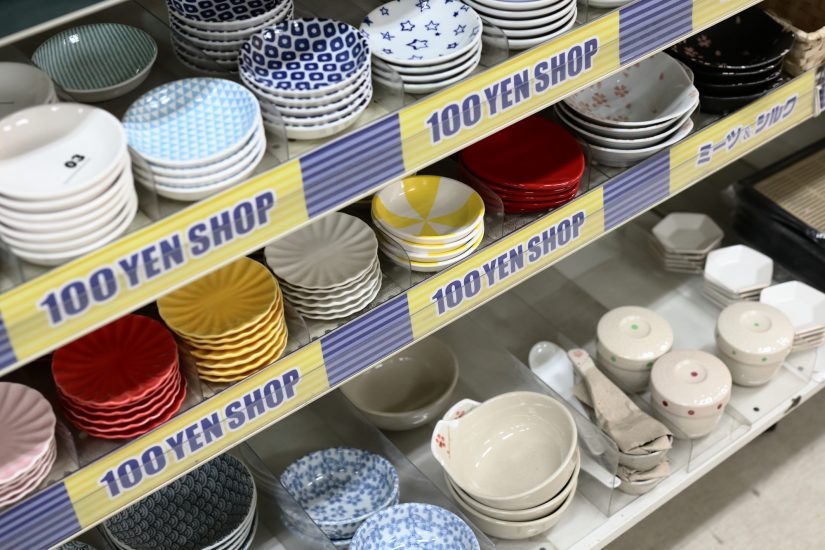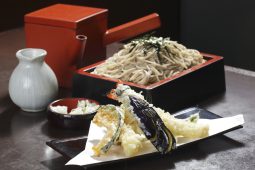Sometimes (as is a bit of a theme with some of my articles), you’re on a budget because – for example – you just moved to another country and you’re only starting to settle in. Or you had a perfectly reasonable budget and spent far too much of it at a nice cookie shop you found, but I’m assuming anybody reading this is much smarter than the author. Or maybe sometimes you want to walk into a place and buy fifty different things. If that’s it, then I’m going to be a little confused, but you’ve come to the right place all the same.
The idea of the hundred yen store would be a lot more novel if I was writing this article, say, a decade and a half ago. Since then, the equivalent’s spread through at least some of the west (best guess, anyway; I don’t know this sort of thing very well, but it might have got somewhere else too). Somehow, though, it still seems to surprise everyone I know who comes here and walks into one.
If I had to guess, the difference is in quality. Just about anyone will be quick to tell you, of course, that you get what you pay for. In a broad sense, yes, that’s true; obviously, if you get it at 100 yen, that ladle or broom or chair you bought is probably not an artisanal masterpiece. On the other hand, the sheer number of things I’ve got from there that have held up just fine over a year or more, with about the same quality as something twenty times the price, shows that it’s probably more than good enough.
I’m not about to go over lists of specific chains or shops, because I’m sure they do very nicely on marketing without my help; they’re all over Japan, you can find your nearest one (百円屋 if you need to look it up) just fine. What I can do, though, is give a breakdown of what you can expect to find there. Where a hundred yen store will help, and where it won’t.
A small aside first: A cousin to the hundred yen store, sometimes under the same roof, is expanding it to ‘one coin’, which in practice means a couple higher-end items at 500 yen. In practice, this is more about a larger range of things you can buy rather than anything costing more, because most things will be there for 100 or not at all rather than suddenly costing five times more; treat it as a bonus, not a markup like I did for a while.
The two biggest things I use it for are dishes (plates, mugs, glasses, muffin tins, that sort of thing), and kitchen utensils. You might not get huge plates or, say, a new frying pan for a hundred yen – which is only fair, really – but you’ll get anything short of pots, pans and electronics. As someone who cooks often, this is where I warn you that you shouldn’t bother with overly specialised tools; you don’t actually need that remote controlled garlic peeler.
Besides that, it’s a good place to get various cleaning supplies, stationery, and (if you’re fine with getting a dozen identical shirts that come in bags) clothes if that particular store happens to offer it. If there’s anyone in the house who might want it, they do alright for toys too, and minor furniture; for example, a small stool, or something on about that scale.
When should you probably not rely on the 100 yen store? One answer is food and drink, since you can get better snacks, or ultimately cheaper and better food cooking at home, which I’ve written an article on elsewhere in the site. This next part is only a guess (I don’t use any myself), but given that it can impact your health you probably do not want to cut corners and get your cosmetics here either, even though it’s offered fairly prominently. Again, not an expert.
If I can offer one bit of advice going in, it’s this: Don’t just wander in to browse with wallet in hand unless you’re prepared to buy much more than you came for. You wander the aisles with nothing much in mind (or even a few particular things) and walk out with half the store in a wheelbarrow several hours later. That’s how they get you. It’s only funny the first time!
Instead, if you have my particular combination of tight budget and zero impulse control, here’s a trick as long as you’re willing to take a bit more time over it. Make a list of what you want, or if you’re not sure what’s on offer, visit without anything on you the first time to look around, and figure it out. Once you know what you’re actually there for, you can step in and get out with minimal wandering, which is the only way to save yourself from getting about thirty things you might not even need.
Oh, and make sure you’ve got some way to carry it all unless you came in a car. A lot of this can be fragile, larger than you’d think or awkwardly shaped, so some trips can (speaking from experience here), make an awkward walk back. You really don’t want to stagger through a 30 minute walk home carrying a dozen plates and glasses without something to make the trip easier on yourself.
For all that, used right, it’s an enormous help for getting started in Japan, or just when you need to get a dozen different things and don’t have the patience to go to different stores for it all. The only thing that’s helped me even close to as much in Japan for this sort of thing is second-hand shopping (a system apparently invented so that people who don’t mind a little scuff mark on something can get it at a tenth of the price).
That’s an article for another time, though. For now, this should help.








